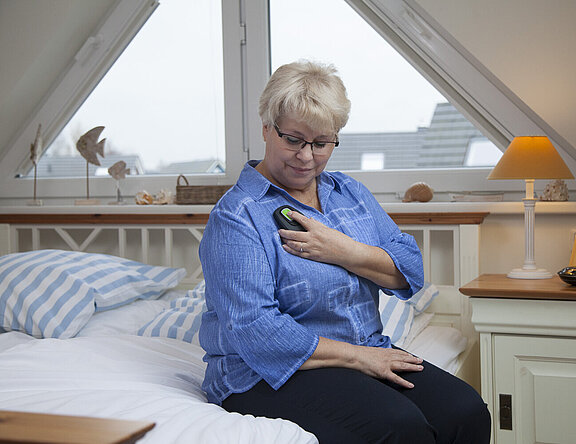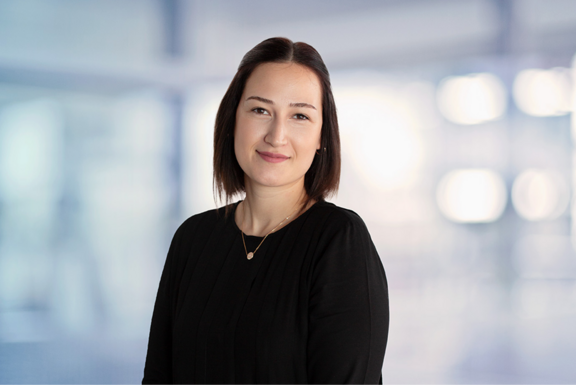How upper airway stimulation works for sleep apnoea
Upper airway stimulation was developed specifically for people with obstructive sleep apnoea, for whom CPAP therapy is not effective or CPAP masks cause problems.
No more interrupted sleep – even without a mask
For obstructive sleep apnoea (OSA), treatment with a CPAP mask is considered the standard of care. However, some people are unable to cope with a CPAP mask in daily life, because they experience unwanted side effects that prevent effective treatment and reduce their quality of life.
Inspire therapy offers an effective alternative for sufferers who have failed CPAP therapy and other treatment options. With this innovative form of therapy, nocturnal breathing pauses are significantly reduced – without the need for a respiratory mask. The treatment is recommended as a therapy by the German Society for Sleep Medicine and Sleep Research for certain sufferers for whom a CPAP mask does not have sufficient effect.1 The effectiveness of upper airway stimulation has been proven in various studies.2,3,4
In people with obstructive sleep apnoea, the tongue muscles and surrounding tissues relax during sleep. When the tongue falls back, the upper airway closes and breathing stops for longer than 10 seconds. The resulting lack of oxygen leads to frequent waking during the night.
With Inspire therapy, the hypoglossal nerve is specifically stimulated with an electrode during sleep. This prevents the tongue from slackening during sleep, falling back and closing the airways. With upper airway stimulation, air can flow freely into the lungs. Breathing pauses and other symptoms of obstructive sleep apnoea, such as snoring occur less frequently after treatment with Inspire therapy. In general, upper airway stimulation is very well tolerated.
For important notes, contraindications and safety information about Inspire therapy, please refer to the Inspire Patient Manual.
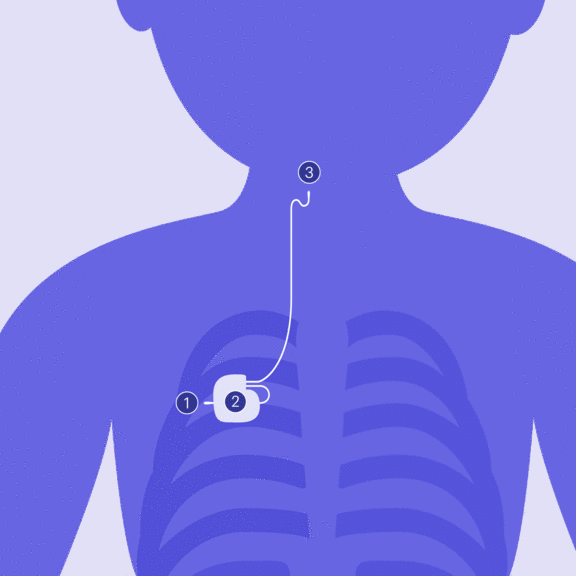
Stimulation in harmony with your natural breathing rhythm
Treatment with upper airway stimulation is also called respiratory stimulation. The system consists of a compact breath sensor (1) and a stimulation electrode (3) powered by a small generator (2). The system continuously measures the breathing rhythm during sleep and adapts to the natural breathing frequency. The patient uses a remote control to switch the upper airway stimulation device on before going to sleep and off when waking up in the morning. In a medical examination, a physician checks if someone affected by sleep apnoea is suitable for Inspire therapy. Upper airway stimulation surgery is performed at specialised treatment centres and clinics.
Efficacy of upper airway stimulation
Inspire therapy is a clinically proven treatment for obstructive sleep apnoea.
Over 60,000 patients worldwide have already been successfully treated with Inspire therapy. You may also find testimonials from some of those affected informative. Large-scale studies have been conducted in Europe and the United States to prove the safety, efficacy and sustainability of this form of therapy.2,3,4 The results of the studies demonstrate the lasting effect of Inspire therapy:
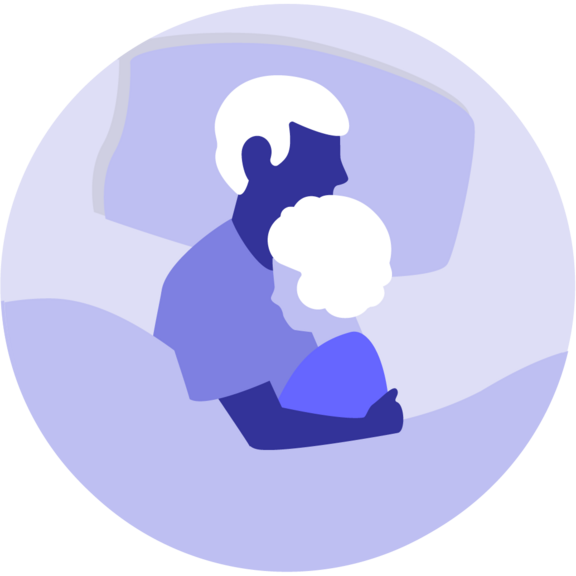
90%
of bed partners report no or only light snoring.3
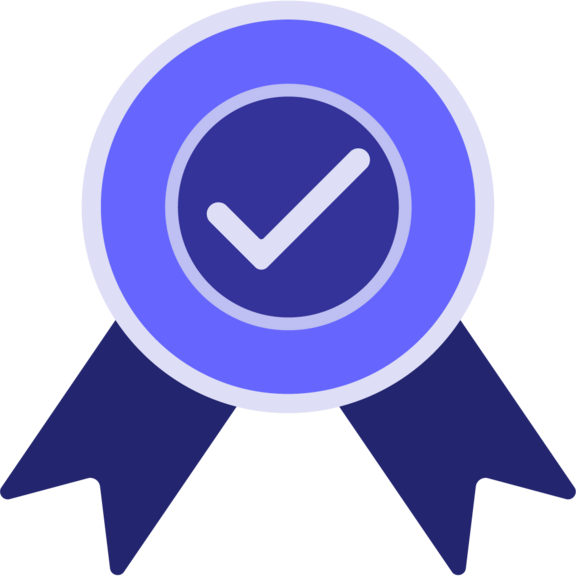
90%
of those affected say they are satisfied with Inspire therapy.4
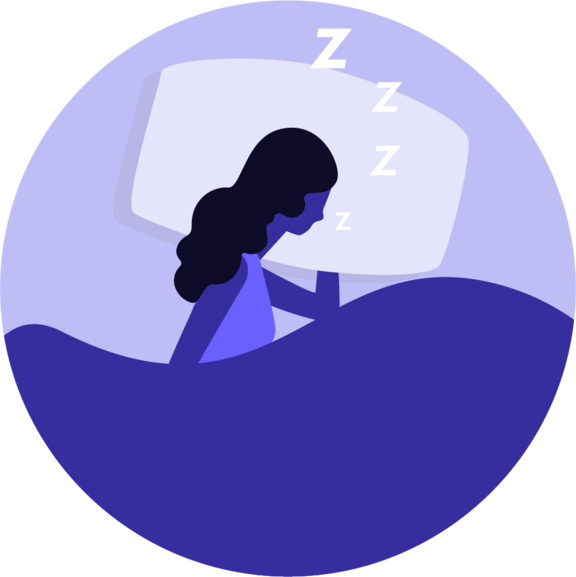
79%
Reduction of nocturnal breathing pauses due to upper airway stimulation.3

80%
of those affected consistently use the system every night.3
Procedure for upper airway stimulation treatment and operation
Treatment with Inspire therapy takes place in four closely coordinated phases to enable those affected by sleep apnoea to achieve optimal therapeutic success with upper airway stimulation.
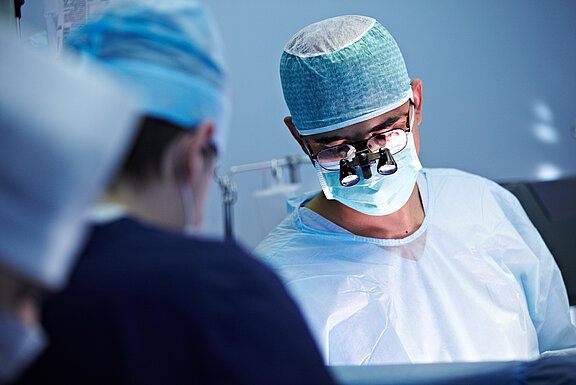
The treatment process for Inspire therapy consists of 4 phases
A specially trained doctor advises the affected person in an initial consultation at one of the Inspire Treatment Centres. With the help of sleep medical examinations, the doctor then checks the suitability for the Inspire therapy, among other things by measuring sleep at night in the sleep laboratory. If the examinations are successful, the doctor and the patient make an appointment for the implantation of upper airway stimulation.
Upper airway stimulation is inserted into the affected person during a short inpatient stay of 1 to 2 days in a specialised treatment centre. The procedure is performed under general anaesthesia via two small incisions below the chin and on the chest. On the day of implantation, the patient can usually eat and speak normally. After about 10 days, the stitches are removed. After about two to four weeks, upper airway stimulation is completely healed. It must not be used before then.
Once the upper airway stimulation device has healed, the therapy is individually adjusted. The consultant activates the system with patient-specific settings and the patient is given a detailed introduction to the operation of the Inspire therapy. The patient uses a remote control to switch on the upper airway stimulation at bedtime and off again when waking up in the morning, adjusting the stimulation as he or she adapts to the new system. Most patients take a few days to get used to the device, after which they will no longer notice the stimulation. After a familiarisation period of about 3 months, the system is individually adjusted and readjusted if necessary during an overnight stay in the sleep laboratory.
Follow-up care takes place once a year with the treating sleep doctor or ENT specialist. During the detailed check-up, the battery status and use of the system are checked and the therapy is adjusted as necessary.
You can find answers to other important questions about Inspire therapy in our FAQs.
Frequently asked questions
Stimulation is usually perceived only weakly or not at all. The most common sensation is a slight tingling or contraction of the tongue muscles. The stimulation should not be painful or uncomfortable and should not disturb sleep. The intensity of the stimulation can be adjusted by the patient using the remote control. Your sleep specialist will make the necessary adjustments so that your sleep is not disturbed.
The healing phase after the procedure varies. For a few days after the implantation, it is normal to experience slight pain and swelling in the area of the scars. Depending on your general condition and any medical conditions you may have, you can usually go home after 1-2 days. Follow-up treatment in a rehabilitation clinic is not necessary.
You should be able to resume your normal activities within a few days after the procedure. You can usually eat normally again the day after the operation. You should avoid strenuous physical activities, such as heavy lifting, for about two weeks, depending on your surgeon’s instructions. About a month after the procedure, you will be examined by your doctor to check the wounds and the healing process. Most patients are fully recovered within a few weeks.
The battery will normally last between 8 and 11 years. It is not possible to recharge the battery, so the generator must be replaced when the battery is empty. This is a quick procedure, similar to the replacement of a heart pacemaker.
Usually, the system does not interfere with your normal daily activities. For particularly strenuous activities, such as weight lifting, or activities involving a large or unpredictable range of motion of the upper body and/or arms, such as working as a firefighter, please talk to your consultant. They will be able to advise you in detail.
All patients treated with Inspire therapy are permitted to undergo various imaging procedures such as a full-body computed tomography (CT) scan, ultrasound and X-rays. Depending on the model of your system, you are also allowed to have a magnetic resonance imaging (MRI) scan of the head and extremities under certain conditions. If an MRI procedure is recommended, it is best to discuss your options with your doctor.
CPAP therapy is currently the standard treatment for obstructive sleep apnoea, as many sufferers benefit from it. However, the positioning and use of these devices can be difficult and may cause problems. Users also report various side effects, such as dry mouth, pressure sores, skin irritation, bloating and chest pain.
Common side effects & problems with a CPAP mask:
- Constant tiredness and persistent snoring despite CPAP mask5
- CPAP mask does not fit and slips – eye irritation & other consequences4
- Mouth and nose dry out4
- Nasal congestion makes CPAP ventilation difficult4
- CPAP mask must be cleaned daily7
- The mask interferes with lovemaking6
- Air in the stomach causes abdominal pain and flatulence4
- Dark circles, bags under the eyes and other eye problems due to CPAP mask4
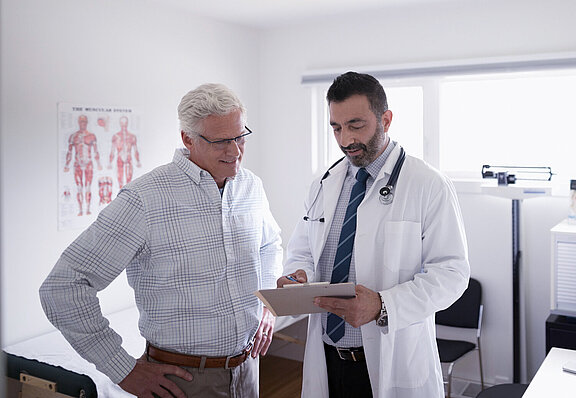
What are the requirements for treatment with upper airway stimulation?
If treatment with a CPAP mask is not possible, upper airway stimulation can be an effective alternative. However, not everyone is suitable for this innovative treatment. Suitability depends on various prerequisites and is checked in medical examinations by a doctor.
For whom is upper airway stimulation suitable?
Prerequisites for OSA therapy with upper airway stimulation:
- It must be moderate to severe sleep apnoea. In a sleep medical examination in the sleep laboratory, the severity of obstructive sleep apnoea is determined as part of the diagnosis and the ‘apnoea-hypopnoea index’ (AHI) is calculated. For this purpose, the number of apnoeas (breathing pauses) and hypopnoeas (periods with reduced respiratory flow) per hour of sleep are recorded in the sleep laboratory. To be suitable for therapy with upper airway stimulation, the apnoea-hypopnoea index (AHI) must be in the range of 15 to 65 breathing stops per hour.
- CPAP therapy is not working successfully or is associated with significant side effects.
- You must not be severely overweight. People are considered to be severely overweight if they have a body mass index (BMI) of more than 35 – for example, if they weigh more than 100 kg and are 175 cm tall. Even if you are above this limit, you can still benefit from this innovative treatment in the future after losing weight. Please consult your doctor or contact the Inspire Medical Support Team.
- You must not have any severe neuromuscular diseases.
- You must not have any other sleep disorders such as narcolepsy.
Complete the eligibility test to find out if you are suitable for Inspire therapy.
You do not have to pay for upper airway stimulation yourself
Hypoglossal nerve stimulation with Inspire is a standard treatment method. The treatment is available on the National Health Service.
The medical team, consisting of a sleep physician and a surgeon, who are both trained in Inspire therapy, will jointly assess whether Inspire therapy is a possible CPAP alternative for you.
Do I Qualify? Self test
Do you have problems with a CPAP mask and would you like to know if Inspire therapy could be a suitable alternative for you?
Find out now with just 4 questions.
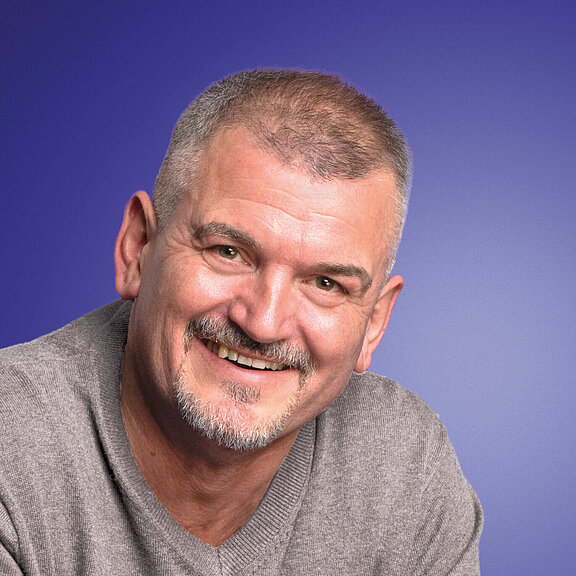
References
1 Mayer G, Arzt M, Braumann B et al. S3-Leitlinie Nicht erholsamer Schlaf/Schlafstörungen, Chapter ‘Schlafbezogene Atmungsstörungen bei Erwachsenen’. Somnology 2017; 20 (Suppl s2): 97-180.
2 Strollo PJ Jr, Soose RJ, Maurer JT et al. Upper-airway stimulation for obstructive sleep apnea. N Engl J Med 2014; 370: 139-149.
3 Woodson, BT, Strohl, K P, Soose, R J et al. Upper Airway Stimulation for Obstructive Sleep Apnea: 5-Year Outcomes. Otolaryngology-Head and Neck Surgery 2018; 159(1):194-202.
4 Heiser C, Steffen A, Boon M et al. Post-approval upper airway stimulation predictors of treatment effectiveness in the ADHERE registry. Eur Respir J 2019; 53(1):1801405.
5 Fietze, I., Ficker, J.H., Heiser, C. et al. Wenn CPAP nicht genutzt oder nicht vertragen wird – Vorschlag für eine standardisierte Terminologie. Somnology 24, 102-105 (2020).
6 Ghadiri, M. & Grunstein, R. R. Clinical side effects of continuous positive airway pressure in patients with obstructive sleep apnoea. Respirology 25, 593-602, doi:10.1111/resp.13808 (2020).
7 CPAP mask cleaning: www.resmed.de/patienten/hilfe-center/reinigung-und-pflege/wie-reinige-ich-meine-maske/ Last accessed: May 2022.
8 Impact on sex life: vivo.lungenliga.ch/umgang-mit-krankheit/47/when-a-machine-is-in-bed Last accessed: May 2022.
The patient testimonials and sleep apnoea treatment reviews above relate to accounts of an individual’s response to treatment. The accounts are genuine, typical and documented. Responses to the treatment can and do vary. Not every response is the same. Patients received travel expenses and were compensated for their time in connection with this endorsement. Please review the safety information provided on this site and note that this therapy is not for everyone. Furthermore, the information on this site should not be used as a substitute for talking with your doctor. Always talk with your doctor about diagnosis and treatment information.

